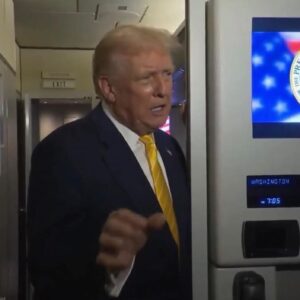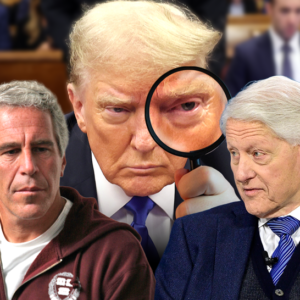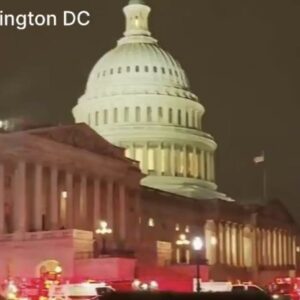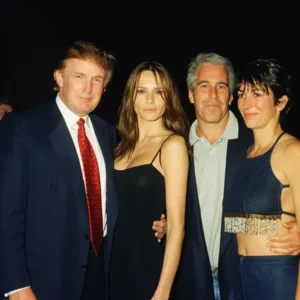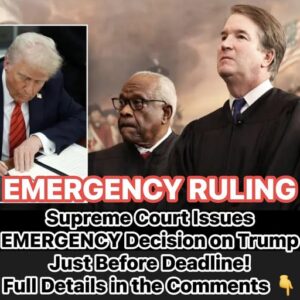A Chilling Threat EmergesFederal authorities have announced the arrest of Juan Espinoza Martinez, an alleged member of the Latin Kings street gang, in connection with a disturbing plot to assassinate U.S. Border Patrol Chief Gregory Bovino.According to the Department of Homeland Security (DHS), a confidential source alerted officials on October 3, 2025, to a credible threat against Chief Bovino — a man who has become one of the most visible faces of America’s ongoing border enforcement efforts.
By October 6, the alleged conspirator was in federal custody, arrested without incident in Burr Ridge, Illinois, following a multi-agency investigation led by Homeland Security Investigations (HSI), Immigration and Customs Enforcement (ICE), and the Department of Justice (DOJ).
The investigation revealed that Espinoza Martinez allegedly used Snapchat to solicit information about Bovino’s location and offered cash bounties for his capture or assassination.
The posts were short, crude, and chilling.
One message read:
“$2,000 cuando lo agarren — $10,000 if you take him down.”
Another included a single phrase — “LK…on him” — which DHS investigators say referred to the Latin Kings, one of the largest and most violent criminal organizations in the United States.
Social Media Trail of Violence
Screenshots from Snapchat were first forwarded to HSI Chicago by a confidential source who had infiltrated online gang networks. The images, captured before they disappeared, showed a conversation between a user identified as “Juan” and another individual discussing Bovino by name.
Investigators quickly traced the account to Juan Espinoza Martinez, 32, an undocumented immigrant previously deported twice for felony assault and narcotics charges. He had re-entered the country illegally sometime in 2023, according to ICE records.
The bounty post wasn’t a joke — it was part of a coordinated online push among criminal elements to target federal law enforcement officials. Within hours of the alert, federal agents began tracing digital footprints, including IP addresses, phone metadata, and encrypted communications linked to Espinoza Martinez’s device.
By the morning of October 6, HSI agents surrounded his residence in Burr Ridge. He was arrested without resistance. A 9mm handgun, multiple burner phones, and cash were found at the scene.
When questioned, Espinoza Martinez reportedly refused to cooperate, demanding a lawyer and shouting anti-government slogans in Spanish as he was escorted into a federal vehicle.
Federal Charges Filed
The Department of Justice moved swiftly, charging Espinoza Martinez with solicitation to commit murder of a federal official, a felony that carries a potential life sentence.
In a statement, Assistant Secretary Tricia McLaughlin condemned the attack plot as a “sick attempt to terrorize law enforcement.”
“Depraved individuals like Juan Espinoza Martinez — who do not value human life and threaten law enforcement — do NOT belong in this country,” McLaughlin said. “We will not allow criminal gangs to put hits on U.S. government officials and our law enforcement officers. Thanks to ICE and our federal partners, this thug is off the streets and behind bars.”
McLaughlin added that under the direction of DHS Secretary Kristi Noem, the department has launched a nationwide review of gang communications and cartel-linked social media channels to identify similar threats.
“These attacks on our brave law enforcement officers must end,” McLaughlin emphasized. “Secretary Noem has been crystal clear — if you threaten or lay a hand on law enforcement, you will be prosecuted to the fullest extent of the law.”
A Broader Pattern of Threats
The arrest of Espinoza Martinez comes amid a troubling surge in organized threats against federal officers. DHS officials have confirmed that multiple gangs, cartels, and even foreign terrorist groups have begun circulating bounties on federal agents, particularly those involved in border security and immigration enforcement.
During an appearance on Fox & Friends Weekend, Secretary Kristi Noem described the growing threat as “unprecedented and deeply alarming.”
“We have specific officers and agents that have bounties out on their heads,” Noem revealed. “It’s been $2,000 to kidnap them, $10,000 to kill them. Their pictures have been shared in encrypted channels. It’s an extremely dangerous situation.”
Noem said the threats are being distributed not just among street gangs but through transnational criminal organizations that profit from human trafficking, narcotics, and weapons smuggling.
“They are making sure they know which officers are out there,” she continued. “They want to take them down because those officers are effective — they’re stopping the flow of money and power these criminal networks thrive on.”
The Chicago Connection
Federal officials say Espinoza Martinez’s arrest in Illinois is part of a much larger story.
Chicago has long been a stronghold for the Latin Kings, a gang that originated in the 1940s and has since expanded nationwide, with thousands of members across multiple states. While the organization has fractured over the years, its presence in Illinois remains potent — particularly in suburban Cook County, where Espinoza Martinez was found.
DHS officials believe the gang has been collaborating with cartel-linked smugglers operating near the southern border, helping to transport migrants and contraband northward. The alleged hit on Bovino, authorities say, may have been ordered as retaliation for recent Border Patrol operations that disrupted smuggling routes tied to Latin Kings affiliates.
Chief Bovino, known for his outspoken stance against organized crime at the border, has led several high-profile crackdowns since returning to the Border Patrol’s top post in early 2025. His initiatives — including drone surveillance and joint operations with Mexican authorities — have led to record seizures of fentanyl, weapons, and human trafficking rings.
Sources inside DHS told The Federalist Wire that these efforts “infuriated criminal networks who depend on chaos and corruption to operate.”
“Bovino has made himself a target because he’s been too effective,” one federal official said. “When you hit the cartels in their wallets, they come after you.”
Echoes of Violence
The plot against Bovino isn’t an isolated case. In recent months, federal agents have reported a sharp increase in coordinated harassment campaigns and physical attacks targeting DHS, ICE, and Border Patrol personnel.
Last month, a group of protesters surrounded an ICE vehicle near Portland, trapping agents inside until tactical units arrived. Days later, federal agents in Broadview, Illinois were rammed by multiple vehicles and fired upon after being boxed in near an ICE facility — an attack DHS believes was linked to anti-ICE activists and cartel sympathizers.
Secretary Noem referenced the same incident during her Fox News interview:
“They had followed them, cornered them, and tried to run them over. These individuals were armed with semi-automatic weapons. Our agents had no choice but to defend themselves.”
Noem confirmed that the woman injured in that shootout had previously issued online threats against ICE and Border Patrol officers. Intelligence reports later revealed that she was affiliated with online networks connected to the Latin Kings and MS-13 members.
To federal officials, the link between these events paints a grim picture: organized gangs, activist networks, and transnational cartels converging to target American law enforcement.
Inside the Latin Kings’ Digital Underground
Experts say the digital transformation of organized crime has made it easier for gangs to coordinate across states — and even countries.
“Social media has become their command center,” explained Dr. Miguel Renteria, a criminologist who studies Latin gang networks. “They use apps like Snapchat, WhatsApp, and Telegram because messages disappear or are encrypted. They no longer need coded graffiti to mark their targets — they just use disappearing messages.”
Renteria says the case against Espinoza Martinez shows how these digital tactics now extend to political and ideological violence. “The gangs are adapting to this new landscape. A threat that begins online can translate into action within hours.”
Federal agencies have stepped up efforts to infiltrate these channels, deploying undercover agents and cyber specialists. But it’s a daunting task — a digital cat-and-mouse game across thousands of private chats.
Who Is Chief Gregory Bovino?
Chief Gregory Bovino is a 30-year veteran of the U.S. Border Patrol, appointed to lead the agency’s operations under the Trump administration. Known for his tough, no-nonsense style, Bovino has been one of the most visible faces of the administration’s renewed border enforcement campaign.
He’s been outspoken about the dangers his agents face daily, from cartel gunmen to human traffickers. His emphasis on “law, order, and integrity” has earned him both deep respect among federal ranks and bitter hatred from criminal groups.
Bovino was also personally involved in several high-profile arrests this year, including operations that dismantled cartel safe houses near Yuma, Arizona, and a fentanyl-smuggling network in El Paso, Texas.
While DHS officials have not publicly confirmed whether Bovino has increased security protection following the assassination plot, sources within the department told reporters that the chief “remains fully active in his duties” and “is not backing down.”
A Message of Defiance
Following Espinoza Martinez’s arrest, Secretary Noem issued a stern public warning to anyone considering similar acts of violence.
“If you target our agents, we will find you,” she declared. “Whether you’re in Texas, Illinois, or hiding in another country — we will track you down and bring you to justice. America will never allow criminal gangs to terrorize the people sworn to protect it.”
Her statement echoed across law enforcement agencies nationwide, where officers say morale has been strained by months of political attacks and public hostility toward immigration enforcement.
To many of them, Noem’s words — and the swift federal response — felt like long-overdue support.
Political and Public Fallout
The arrest has also reignited political debate in Washington over the state of border security and the threat of domestic extremism.
Republican lawmakers have praised the administration for taking decisive action, while Democrats have expressed concern about what they call “politicized rhetoric” surrounding immigration and crime.
But on the streets of border towns like Yuma, McAllen, and Eagle Pass, few are debating politics. Residents there say they’re just grateful for a federal force willing to confront the growing violence.
“These officers are risking their lives every day,” said Maria Alvarez, a store owner in El Paso. “If the gangs are putting prices on their heads, then something is seriously wrong. We need to protect them.”
A Dark New Phase
Experts warn that the Espinoza Martinez case could mark the beginning of a new phase in gang–cartel collaboration, where U.S.-based gangs act as enforcers or intelligence gatherers for international criminal networks.
A DHS analyst described the threat as “hybrid warfare.”
“We’re not just fighting drugs or illegal immigration anymore,” the analyst said. “We’re fighting organizations that use propaganda, digital tools, and intimidation to undermine federal law enforcement itself.”
For now, officials say the immediate threat has been neutralized. Espinoza Martinez remains in federal custody pending trial. Prosecutors are expected to pursue maximum sentencing, and DHS has expanded protective details for top Border Patrol officials.
But the fear lingers. Somewhere in the encrypted corners of social media, others may already be planning their next move.
Conclusion: A Warning and a Promise
The arrest of Juan Espinoza Martinez is more than just a criminal case — it’s a warning. It underscores how deeply gangs and cartels have embedded themselves in the fabric of America’s cities, and how willing they are to cross lines that were once unthinkable.
For Border Patrol Chief Gregory Bovino, it’s a reminder of the cost of doing his job — and a testament to the danger faced by those who stand between lawlessness and the rule of law.
In the words of DHS Secretary Noem:
“This isn’t about politics. This is about defending the men and women who defend America. Anyone who tries to harm them will meet the full force of justice.”
And with that, the message was clear — no bounty, no gang, no threat will stop the United States from protecting its own.
